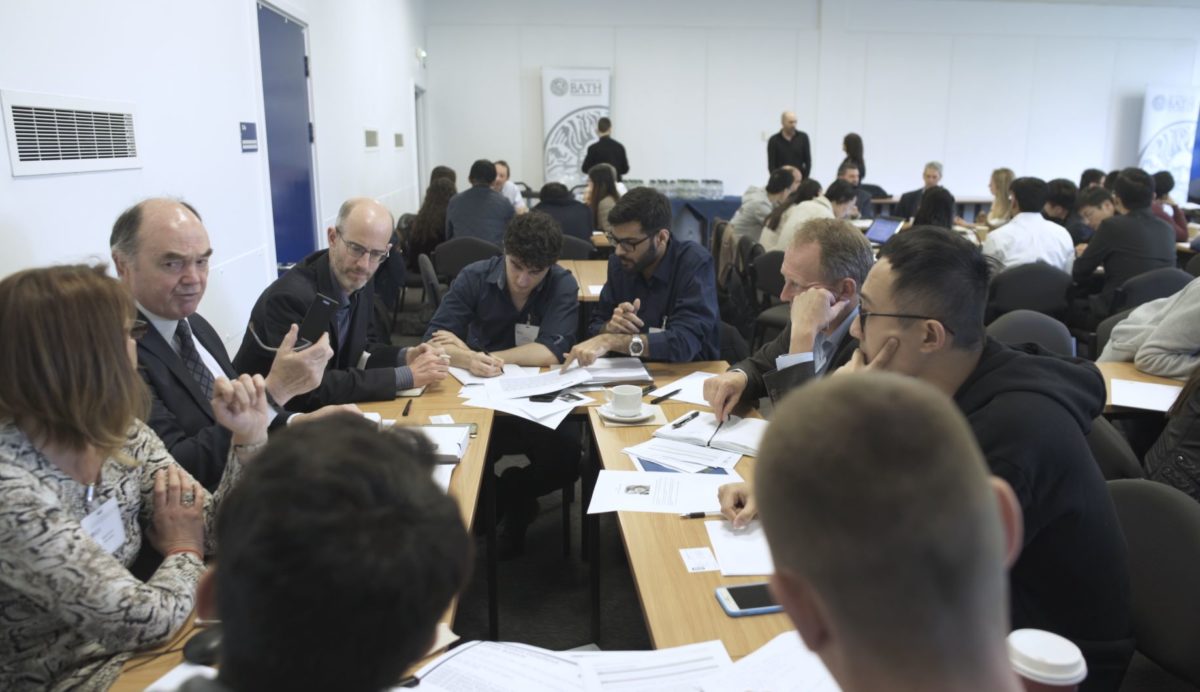This picture was taken last year during the 2019 Practice Track Kick-Off
Author: Prof Peter Mott -
What is the answer to 54 divided by (11 plus 4 plus 9)?
This was a question I posed yesterday to the students embarking on their Practice Track Projects. These projects are part of their studies towards an MSc Engineering Business Management (EBM) or MSc Innovation and Technology Management (ITM) at the University of Bath.
I had started the Project Kick-Off event – with students, company sponsors, and project supervisors all assembled via our video meeting (the ubiquitous MS Teams which many of us find ourselves talking to these days!)
The most diligent students quickly responded in the chat with the answer 2.25. Others soon caught on and the chat room filled up with the same answer. The odd 2.5 appeared (mental arithmetic error or wrongly typed in the calculator app on their smartphones I wondered?). But no correct answer appeared. Although mathematically accurate, this was not the answer that I was looking for.
In a not-so-veiled attempt to get the message across that their upcoming projects required them to think creatively and beyond the obvious, I suggested that they think carefully about the problem statement and the context in which it was set. You see, this was not a Maths problem (and I am not a Maths Professor), which had a definitive right or wrong. Instead, it was an Engineering Management question where the answer was open to interpretation and innovation.
So, in this case – the 54 represented the number of students on the call, formed into 11 teams, that were embarking on their newly assigned projects. They are a fantastically diverse group of students from 16 countries with backgrounds ranging from engineering to management disciplines, and from accounting to social sciences.
The 11 thus represented the number of Practice Track projects that they would be working on over the summer. Our sponsoring companies who are providing these projects had come forward with many real-world engineering or technology management challenges and opportunities that they wanted help with.
A remarkable set of companies that we are proud to work with at the university. From household names such as Rolls Royce Aerospace, Tata Steel, and the McLaren F1 Team’s Manufacturing department… through to some lesser-known companies that are leaders in their field – like Quick Release (an automotive services provider working with all the big OEMs) and HID Global (who provides the enabling technology that helps us all to access buildings with ID cards or devices).
We also had some younger companies such as Somnus Scientific - a start-up looking to commercialise an innovative new biosensor that could revolutionise the delivery of anaesthesia during an operation.
The remaining terms in the equation, the 4 and the 9, represented the project supervisors. Four are the experts coming from previous senior management roles in industry, who are acting as the bridge between the academic and business worlds. Nine are the academics from the university bringing their expertise from the world of Engineering or Management.
So, when is a maths question NOT a Maths question? When :
54 students / (11 projects +4 industrial supervisors +9 academic supervisors) = The Engineering Management Practice Track*
*OK, fair enough… half marks awarded for coming up with 2.25!
Respond
